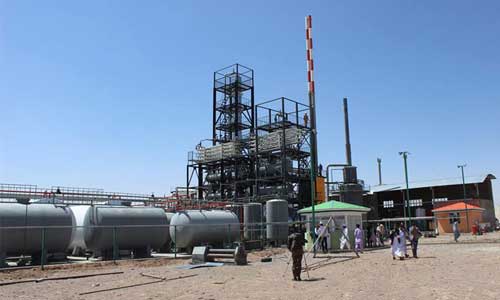In Afghanistan after minor development in 2001 on business and industries, there have been more challenges and risks due to vulnerable environment and lack of infrastructure. Political uncertainties, economic instability, raw material unavailability, poor infrastructure, and new technology are seen as challenges for most of industries in Afghanistan.
Risk management along with globalization approaches have been a complete part of supply chain management in recent years. Threats and risks are now present everywhere in the modern business world, and it is one of the most important and challenging issues for the companies to deal with, as far as predicting, assessing, analyzing, monitoring and controlling the risks are concerned. Therefore, Supply Chain Risk (SCR) Management gets much attention from both academics and practitioners in the world. Scholars define supply chain risk in various ways and it is often vague. Peck defines SCR as ‘anything which threats or puts risks to the whole supply chain flows, information, materials or product and financial flow from point of origin suppliers to the end – consumers.’
The purpose of this article is to highlight Petrochemical Industry of Afghanistan and its associated supply chain risks. Chemical and plastics products are the building blocks for production of variety of items with different characteristics from durable to non-durable consumer goods. This industry produces everyday items which we wear, construction materials for our homes and offices, other household appliances, electronic devices, packaging for different products and for so many transportation modes. These chemical and plastics materials used as main raw materials for manufacturer to produce this vast majority of goods.
Petrochemical industry in Afghanistan like all other industries is immature but it still manages a market share of 80% for household’s plastic and rubber products, packaging for food and beverages, PVC pipes, PET containers and plastics flooring, the remaining demand for petrochemical products is fulfilled by imported goods from foreign markets and suppliers. According to Afghanistan Investment Support Agency (AISA), there is potential of consuming around 65 million tons of petrochemical products per year.
On the other hand, Afghanistan has a vulnerable market due to insecurity, corruption, unstable economic and bad business climate. These challenging factors put a high pressure on overall supply chain of business industries from sourcing to delivering product and services to the consumers. In this regard, following are the threats and challenges for Afghan Petrochemical Industry;
Availability of Raw Materials: In the recent years, few companies have been established for recycling the scrap and waste and make them as raw materials for plastic companies and supply into the petrochemical industry. This amount of recycling is insufficient and cannot be regarded as the main source of supply for the plastics companies. Hence, the industry feeds from imported supplies from Iran and Pakistan.
Price of Crude Oil: Crude oil and natural gas is the main resource of raw material for the petrochemical industry. Price fluctuation and the market uncertainties cause a significant impact on this industry and may result in shut down of some companies that have not an integrated supplier strategy.
Plant Facilities: Lack of standard facilities and infrastructure for the industry is the most challenging part. Companies are unable to produce quality products with full capacity. Moreover, they are not able to import new facilities because of large budget requirements and poor import-export relations with other countries.
Economies of Scale: Petrochemical industry, especially the plastic producing industry, is newly established and they mostly have less efficiency and capacity. As a result, smaller, older, and less efficient units are being shut down, expanded, or, in some cases, retrofitted to produce different chemical products.
Environment: Government legislation and global trends for making a better environment and green supply chain limits the operation of petrochemical industry in Afghanistan. A newly established company must consider all the necessary action to prevent harmful activities into the environment. In many cases, the companies neither have the awareness of what sort of technology to use, nor the capacity of investing in such facilities.
Technology: Most of the companies are not well-equipped with standard machinery to design process and produce products. Ultimately, the imported goods are not as per the modern design standards and cannot attract buyer attention.
Political Uncertainties: According to Global Knowledge Risk Assessment, Afghanistan lies among one of most risky countries with a grade of D, representing a high risk for companies. It is mostly due to the political and economic condition which ultimately make the situation very difficult to run a business, and it has significant impact on corporate payment behavior; therefore, its default probability is be very high.
The challenges mentioned above are few of many challenges in the way to improving Petrochemical Industry of Afghanistan. The relevant government authorities and the private investors and businessmen need to consider them if they are serious in solving the issues being faced by the industry.
Home » Opinion » An Overview of Petrochemical Industry in Afghanistan
An Overview of Petrochemical Industry in Afghanistan
| Mohammad Basir Karimi

